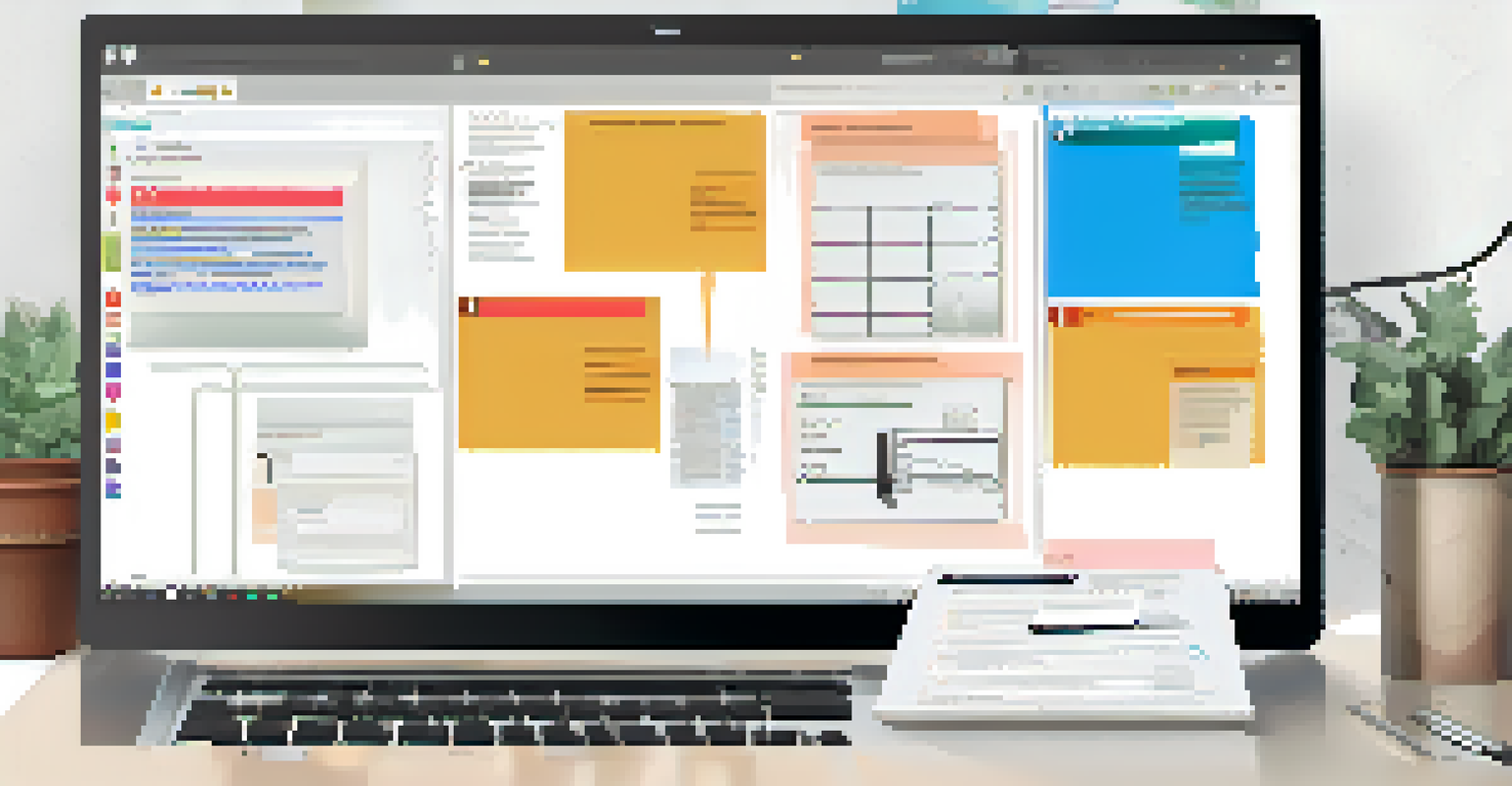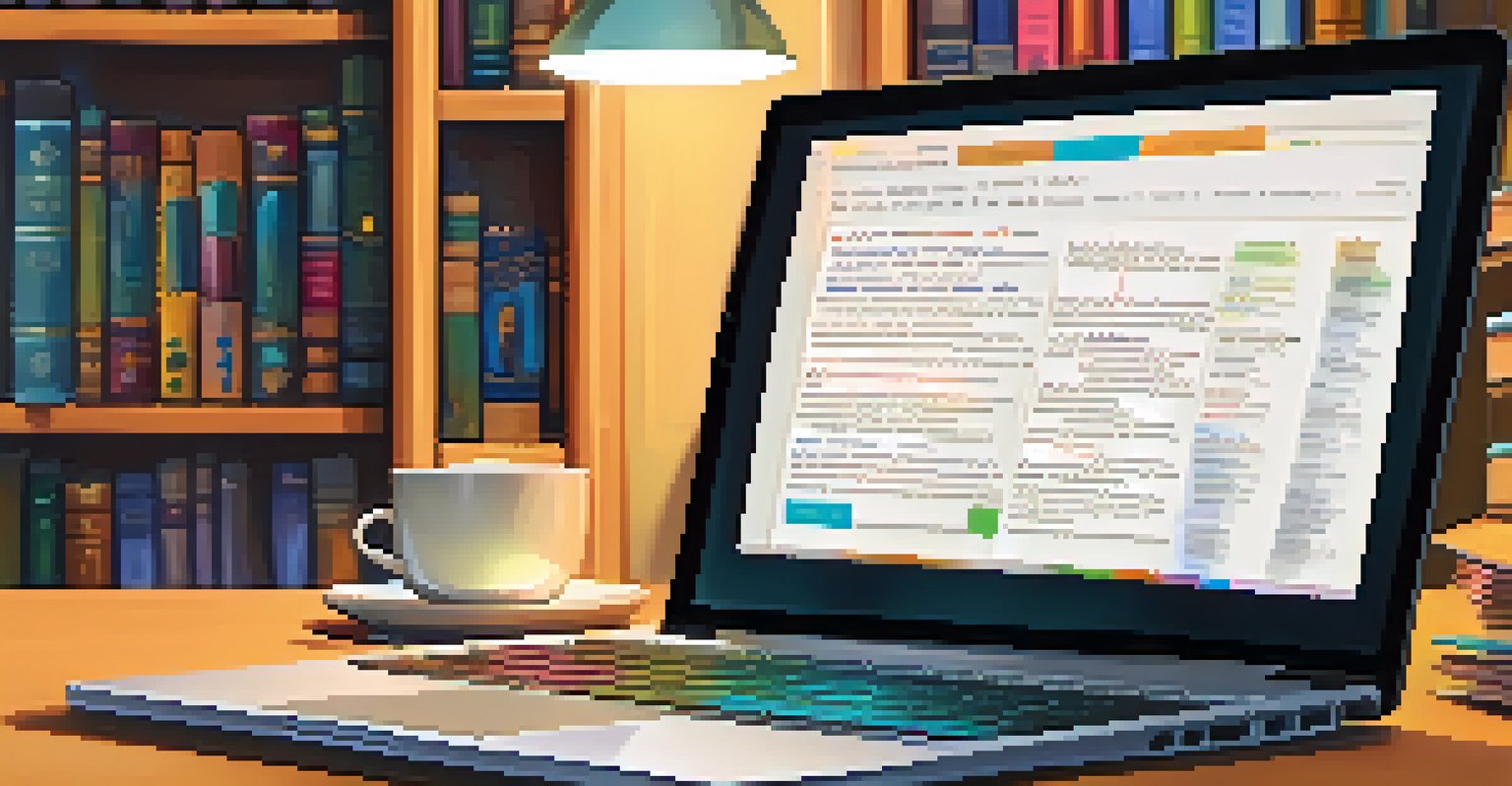Using Feedback Tools to Enhance Collaborative Learning Efforts

Understanding Collaborative Learning in Education
Collaborative learning is an educational approach where students work together to solve problems, complete tasks, or understand concepts. This method not only enhances knowledge retention but also fosters critical thinking and communication skills. Imagine working on a group project where each member brings their unique strengths to the table—this is the essence of collaborative learning.
Alone we can do so little; together we can do so much.
By engaging in discussions and sharing perspectives, learners develop a deeper understanding of the subject matter. Think of it as a potluck dinner; everyone contributes a dish, and together, you enjoy a more varied and satisfying meal. This interaction can lead to richer insights and a more comprehensive grasp of the content.
However, to maximize the effectiveness of collaborative learning, implementing feedback tools can play a crucial role. These tools help facilitate communication among group members, ensuring that everyone is on the same page and can express their thoughts constructively.
The Role of Feedback Tools in Learning
Feedback tools serve as bridges that connect learners and enhance their collaborative efforts. They provide a structured way for students to share their thoughts, suggestions, and critiques with one another, creating a safe space for open communication. It's like having a GPS on a road trip; it helps you navigate the journey and avoid potential pitfalls along the way.

These tools can vary from simple comment sections to more complex platforms that allow for real-time discussions and document sharing. For example, platforms like Google Docs enable users to leave comments directly on a document, making it easy to address specific points. This immediacy can lead to more meaningful exchanges and quicker improvements.
Collaborative Learning Enhances Skills
Working together in groups fosters critical thinking, communication, and a deeper understanding of concepts.
Ultimately, the use of feedback tools not only enriches the learning experience but also empowers students to take ownership of their education. When learners feel supported and heard, they are more likely to engage actively and contribute to the group's success.
Types of Feedback Tools for Collaboration
There are various feedback tools available that cater to different collaborative learning needs. Some popular options include online surveys, discussion forums, and collaborative workspaces. Each tool has its own unique features that can enhance the learning experience, making it essential to choose the right one for your group.
The best way to predict the future is to create it.
For instance, platforms like Slack or Microsoft Teams facilitate continuous communication among team members, while tools like Trello help manage tasks and progress. Imagine using a toolbox; each tool serves a specific purpose, and together, they help you complete a project efficiently.
It's important to explore and experiment with different feedback tools to see which ones resonate best with your learning style and group dynamics. The right tool can transform how you collaborate and learn together, making the process more enjoyable and effective.
Best Practices for Using Feedback Tools
To make the most out of feedback tools, establishing clear guidelines is essential. Setting expectations around how and when to provide feedback can help streamline the process and ensure that everyone is comfortable participating. Think of it as setting the rules for a game; clarity leads to a smoother and more enjoyable experience.
Encouraging constructive feedback is another key practice. Instead of simply pointing out what's wrong, guide learners to suggest improvements or alternatives. This approach fosters a positive atmosphere where everyone feels valued and motivated to contribute.
Feedback Tools Improve Collaboration
Utilizing feedback tools creates a safe space for open communication, enabling effective collaboration among learners.
Lastly, regularly reviewing the feedback process itself can help improve its effectiveness. Collecting insights on how the tools are working and making adjustments based on group feedback can lead to a more productive collaborative environment.
Integrating Feedback into Learning Cycles
Integrating feedback into the learning cycle is crucial to ensure continuous improvement. After each collaborative project or activity, take time to reflect on what worked well and what could be enhanced. This reflective practice is akin to a coach reviewing game footage to identify strengths and areas for growth.
By incorporating feedback into the next learning cycle, students can apply their insights and make adjustments to their approach. This iterative process not only strengthens their understanding but also reinforces the value of collaboration.
Furthermore, documenting feedback and changes over time can serve as a valuable resource for future collaborations. This archive of experiences allows learners to see their progress and encourages a growth mindset.
The Impact of Feedback on Group Dynamics
The way feedback is delivered can significantly influence group dynamics. Positive, constructive feedback can boost morale and encourage teamwork, while negative or vague feedback might lead to frustration and disengagement. Just like a garden, nurturing the right environment can help collaboration flourish.
Creating a culture of respect and openness around feedback is essential. When group members feel safe to express their thoughts, they are more likely to participate actively and support one another. This sense of community can transform a group into a cohesive unit, working towards shared goals.
Positive Feedback Shapes Group Dynamics
Constructive feedback nurtures a supportive environment, boosting morale and enhancing teamwork within groups.
Moreover, recognizing and celebrating achievements, no matter how small, can further enhance group cohesion. A simple acknowledgment of effort can go a long way in motivating individuals to contribute positively.
Future Trends in Feedback Tools for Learning
As technology continues to evolve, so too will feedback tools and their applications in collaborative learning. Emerging trends like artificial intelligence and data analytics are set to revolutionize how feedback is collected and analyzed. Imagine having a personalized assistant that helps you track your learning progress and suggests improvements based on your interactions.
These advancements will likely lead to more tailored feedback experiences, allowing educators and learners to customize their approaches to suit individual needs better. This trend could create a more inclusive learning environment where everyone can thrive.

In conclusion, embracing these future trends will not only enhance collaborative learning but also prepare students for a rapidly changing world. The ability to adapt and leverage technology effectively will be invaluable in their educational journey and beyond.